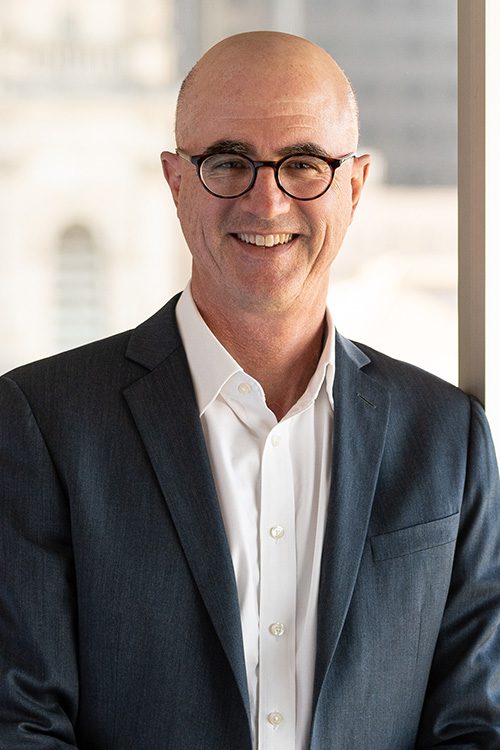Thought leadership
The best performing Boards and Investment Committees (ICs) recognise their primary role is one of governance, not operations and certainly not investing.
Fundraising and investment are two big issues NFP Boards and IC’s are struggling with right now.
Issues for Fundraisers
With fundraising, the basic issue is to decide which approach:
- the Hand-to-mouth approach, that is to be raising funds this week and spending them next week; and
- the Endowment approach, that is to initially generate a large pot or corpus before embarking on a journey.
Hand-to-mouth is often the easiest and quickest – mass mail-outs at tax time or rattling tins in the mall for example. Many NFPs go down this path initially and worry about more targeted strategies later. Strategic fundraising is a widely recognised as an art form with success being highly sensitive to recruiting the right people with the right networks – from grant seeking processes to schmoozing philanthropists and the wealthy for their bequests. Sourcing these pools of money or ‘endowment capacity’ that aligns with your organisation is difficult and a failure to convert often comes down to governments cutting back or NFPs misunderstanding capacity and ‘willingness’ to give. This is the fundraising conundrum!
For many NFPs stuck in the hand-to-mouth model the current environment is punishing and will emphasise the inadequacy of this strategy. Whilst donors are on involuntary strike, Boards should be taking the opportunity to scrutinise their sustainability. The downturn in funding has arrived and it’s not going to get any better any time soon.
There are models suited to various different types of NFPs which start as a guide to building an Endowment structure. I’ve attached a great resource from Stanford University to help NFP Boards start the conversation: https://ssir.org/articles/entry/ten_nonprofit_funding_models.
Bearing in mind the Endowment approach is not often taken by a Board. When it is, it requires astute strategic input, unique skills and resources, and it’s likely to take many years of hard work to build funds But the onerous circumstances we find ourselves in 2020 present a golden opportunity for the stewards of NFPs to rethink their models and build more sustainable futures for their stakeholders.
The Endowment Approach to Investment
For many NFP’s investing isn’t any easier than fundraising. Boards and ICs need to ensure that those individuals who are responsible for investing an organisation’s assets are doing so in compliance with an agreed investment policy. Virtually every asset-owning NFP organisation should maintain this clear divide between investment committee governance and investment strategy implementation.
The Endowment approach is often referred to as the ‘US endowment model’ which is linked to leading educational institutions such as Yale, Stanford and Princeton, pioneering some of the most successful modern standards for Endowment investors.
Investment approaches have evolved beyond the basic building blocks of earlier models to include cutting edge risk management techniques, tactical asset allocation, value-added relationships with niche asset managers and other investment partners and creative co-investment strategies across many asset classes.
Investment Solutions
Endowments and Foundations differ from other types of institutional investors in a number of ways, as they have:
- relatively long investment time horizons, but a need for annual income
- far less peer-group sensitivity
- the ability to take advantage of tax exemptions.
The key advantage is understanding that long term investors should outperform short term investors if they take full advantage of this horizon through appropriately balanced allocations to liquid and illiquid asset classes and building all-weather portfolio structures that cope with the market’s ups and downs by implementing more stable risk profiles.
The preferred investment approach
In today’s increasingly complex investment environment, outsourcing a Chief Investment Officer ‘CIO’ is a good approach for many Endowment and Foundation investors who often find it difficult to commit the necessary time and resources to making swift and often complex investment decisions.
This enables Trustees of Boards and/or ICs to spend more time focused on high-level strategic matters like investment objectives and asset allocation while leaving the day-to-day operational decisions to staff. Other benefits include being able to access a larger pool of specialist resources such as research teams with deep expertise in multiple asset classes, portfolio management teams, senior investment professionals, portfolio analysts and more effective operations, administration and reporting teams.
Examples of the types of groups taking advantage of this approach include university endowments, private school endowments, independent foundations, religious groups, public benevolent institutions, indigenous corporations, environment protection organisations, private family foundations, museum endowments and charitable hospital and medical research foundations.
For Board’s making decisions about the best fit and working with an outsourced CIO they should keep in mind that the goal is for an integrated approach working in unison with external professionals, the Endowment’s internal team and the investment committee to develop a clear long-term investment strategy usually covering the full portfolio.
Services typically provided by the outsourced CIO model will take on full responsibility for executing that strategy including overall portfolio asset allocation and populating the portfolio with best in class asset managers in line with the agreed risk budget and any other specific mandate requirements.
Investment Committees Best Practices
The best performing investment committee should:
- Bring relevant and complementary experience to the investment strategy. Less is more in terms committee members.
- Have an explicit understanding of the purpose and objective of the assets and a clear definition of success in determining whether the portfolio fulfils that purpose and meets that objective.
- Create a clear Investment Committee Charter covering the fiduciary duties of each member, terms of engagement and policies to which they commit – e.g., conflict of interest.
- Adopt a clear Investment Strategy, Policy and Governance Plan risk tolerance, expected returns and the basis for establishing annual withdrawals, liquidity constraints, currency strategy, parameters for diversification, maximum manager and underlying position size, environmental, social and governance considerations; decision making and approval processes; and target asset allocation and ranges around that allocation.
- Clear means of measuring short term and long-term performance, including benchmarks.
- Simple evaluation criteria and a process for hiring managers to implement an investment strategy.
Meeting Agendas for ICs
Most meetings should cover a small number of broad topics including:
- Investment performance assessment
- Macroeconomic assessment and related tactical asset allocation moves
- Monitoring compliance with the investment policy
- Pressure testing external advisor processes (e.g., risk management, manager due diligence, tactical asset allocation, ongoing assessment and reporting accuracy)
Experience and myriad global case studies in excellence and success demonstrate that the Endowment approach combined with good governance and sound investment policies can have a material impact on an NFP’s long term performance and sustainability.





































